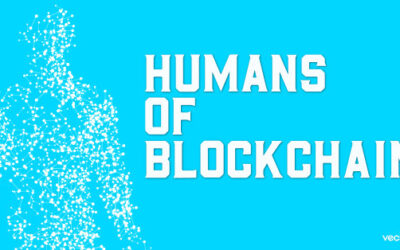MOU between DNV GL, VeChain, andDNV GL introduces new SMIT token and low-carbon ecosystem
Monday, July 22 – DNV GL continued to push for more innovation towards lowering carbon emissions with their new proposal for a San Marino Low Carbon Ecosystem. The Memorandum of Understanding was signed by Sunny Lu (VeChain CEO), Andrea Zafferani (the Republic of San Marino Secretary of State for Industry, Trade, Business, Cooperation and Telecommunications), Sergio Mottola (the President of San Marino Innovation), as well as DNV GL Global Director of Digital Transformation, Renato Grotttola.
 Source: DNV GL
Source: DNV GL
“We are particularly proud of this Memorandum of Understanding that certifies the Republic of San Marino as the ideal place to foster a culture of experimentation and bring blockchain to our everyday lives. We’ll give life to a project that will directly engage citizens and reward their sustainable behavior, while also meeting the country’s demands in regards to CO2 emissions reduction, water saving and waste disposal and management. Our ambitious goal is to become the first zero-emissions country in the world.”
Andrea Zafferani, Republic of San Marino Secretary of State for Industry, Trade, Business, Cooperation and Telecommunications
What is a low-carbon ecosystem?
The purpose of a low-carbon ecosystem is to incentivize cleaner activities. DNV GL and VeChain first collaborated on a blockchain-based low-carbon ecosystem in China, working with major multinational partners like People’s Insurance Company of China, BYD, Bright Foods, as well as top local hospitals and universities. The plan was to reward eco-friendly behavior with credits that can be used towards useful products or services. For example, users who take advantage of BYD’s electricity-powered hybrid vehicles would be entitled to spend their credits on premium medical care at the prestigious Renji Hospital in Shanghai.
The San Marino Innovation Token (SMIT) will be the reward for CO2 emissions reduction, water conservation, and waste disposal and management. This is a landmark achievement for the blockchain industry, as it’s the first government to implement a public chain for assistance with environmental protection.
The China-based low carbon ecosystem, powered by the CVCT token, is expected to launch later this summer. The SMIT-powered ecosystem has a bit further to go with development, but has already been in development for over a year, according to San Marino Innovation President Sergio Mottola. Both of these tokens should bring increased volume to the VeChain mainnet, which already ranks in the Top 10 of most used public blockchains. Additionally, they should serve as an example of how blockchain technology can be used by government organizations to improve citizen services within a country.





